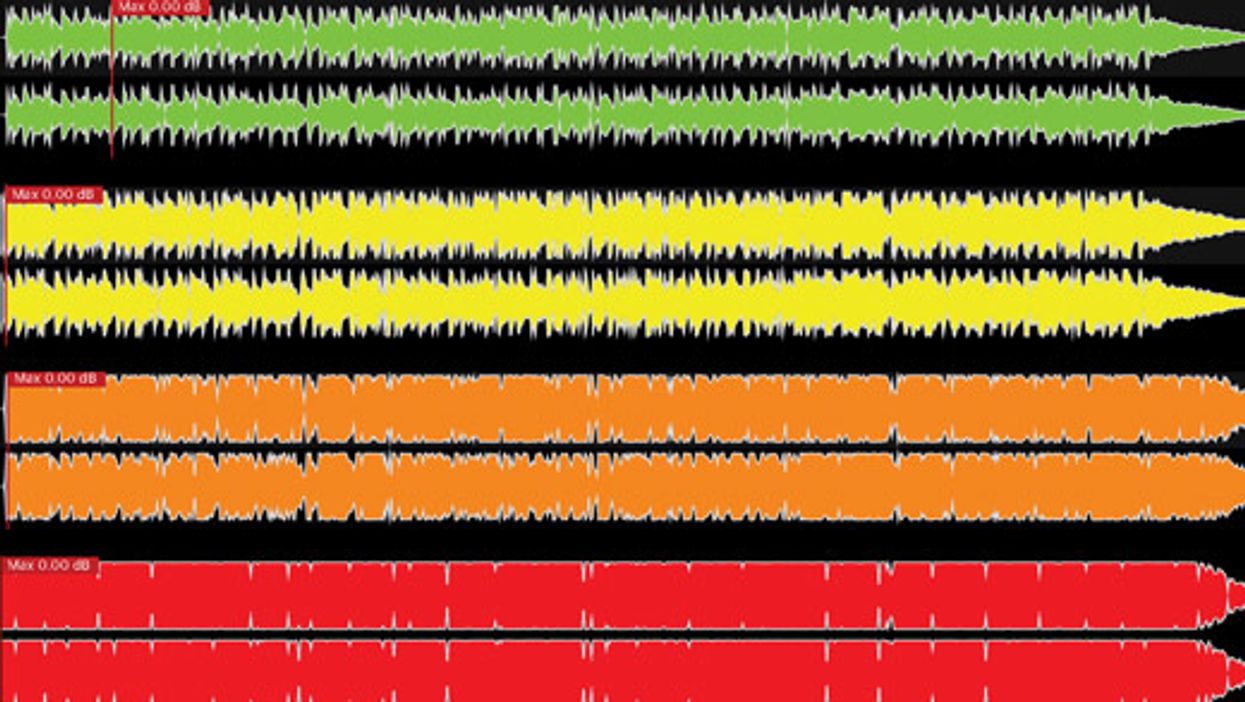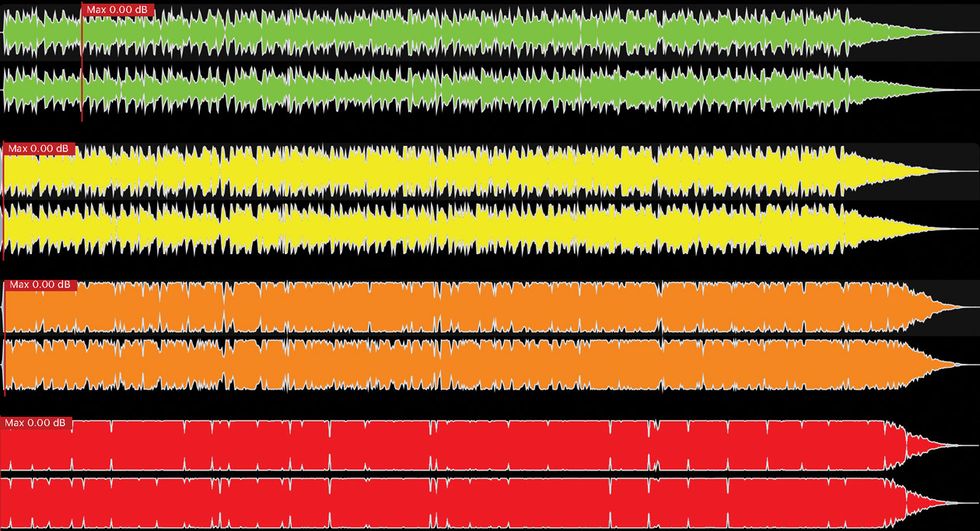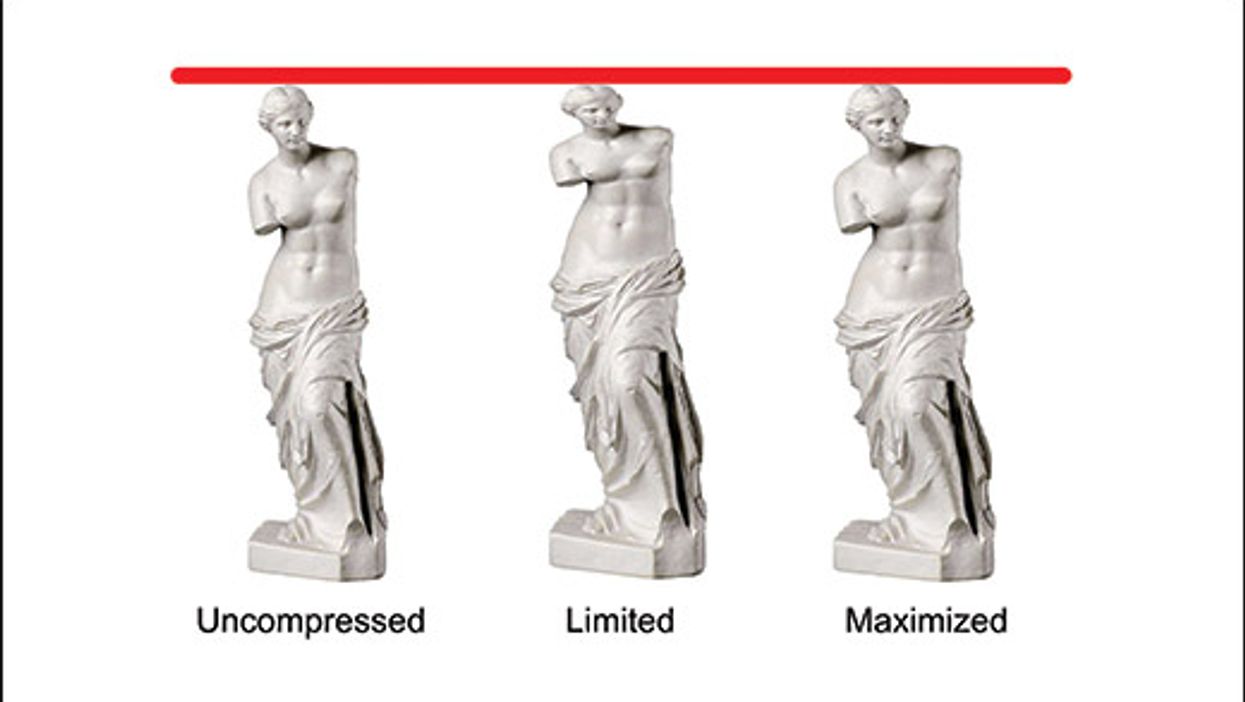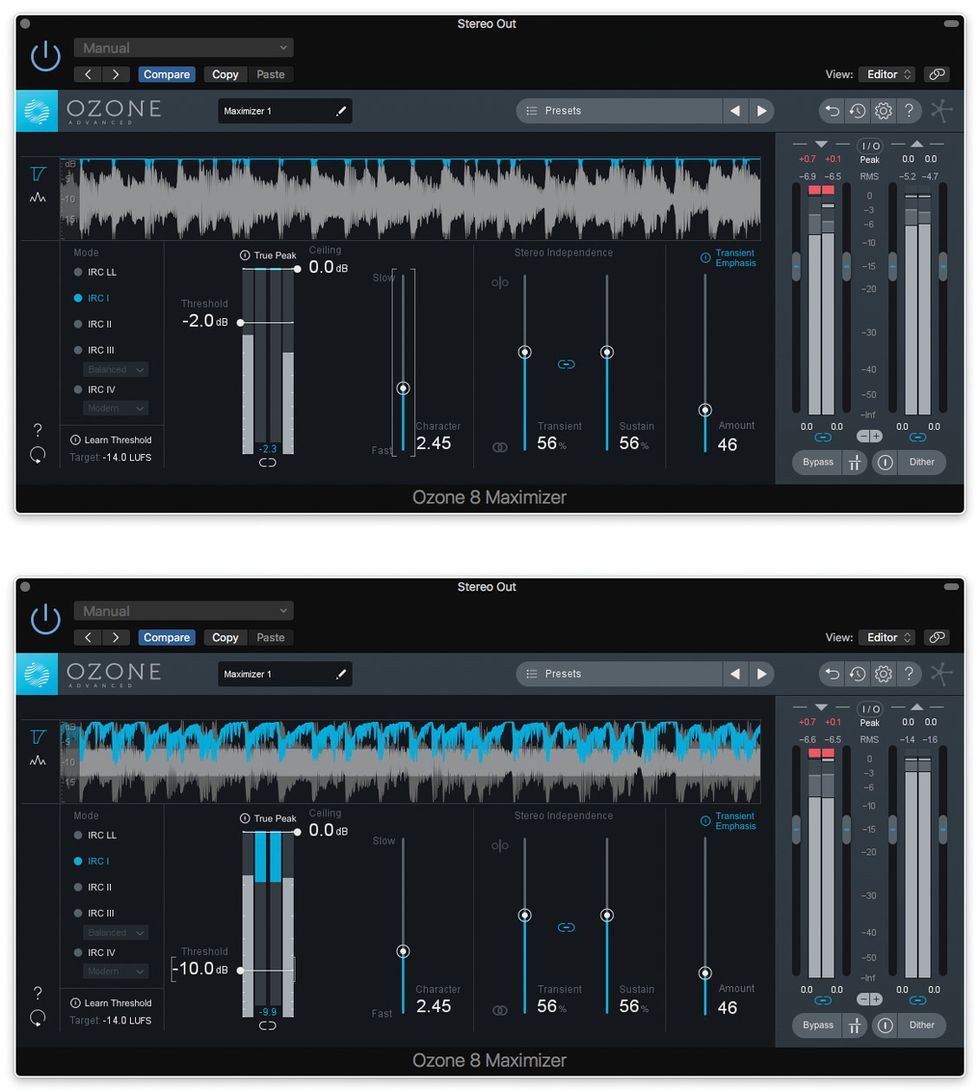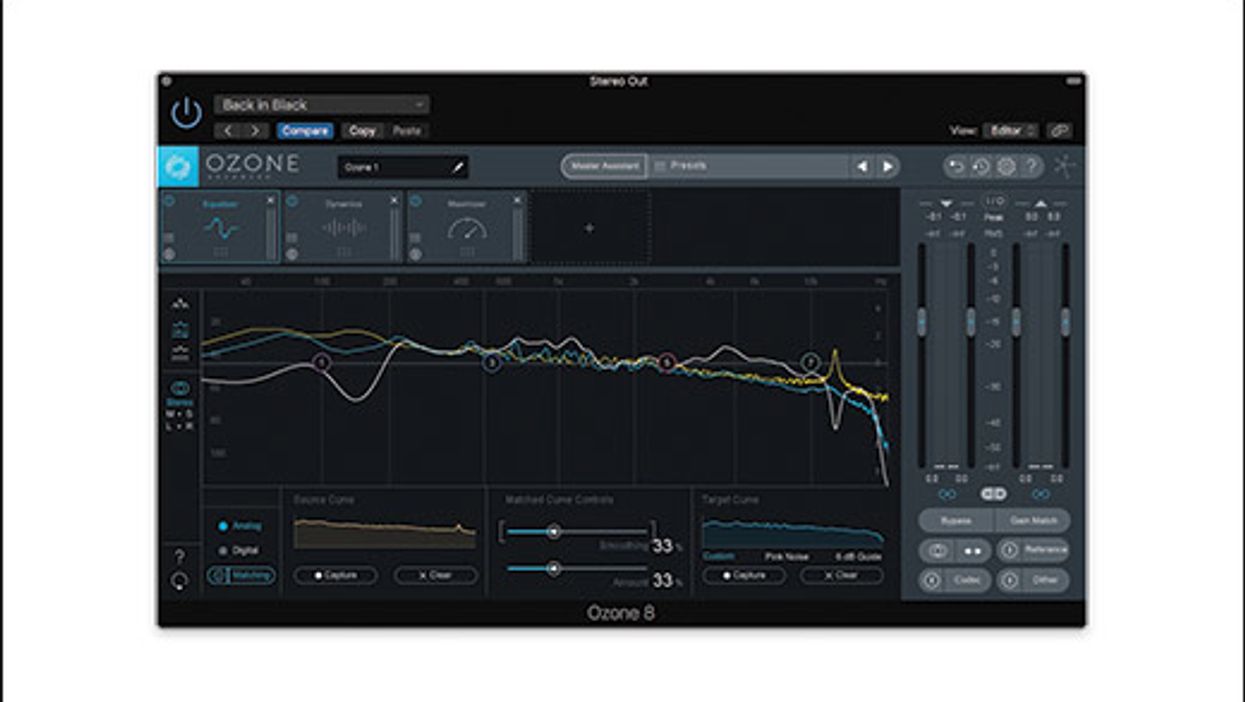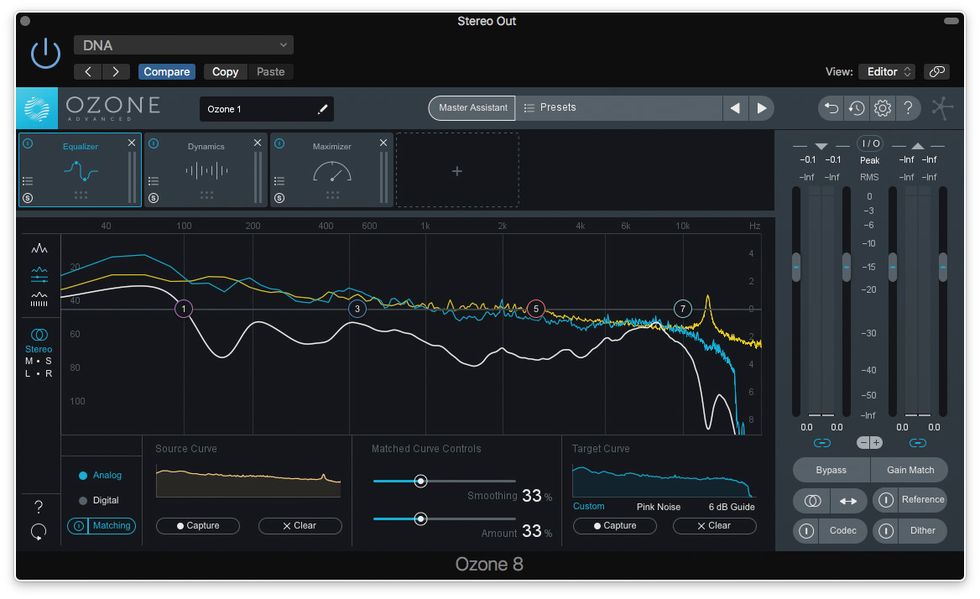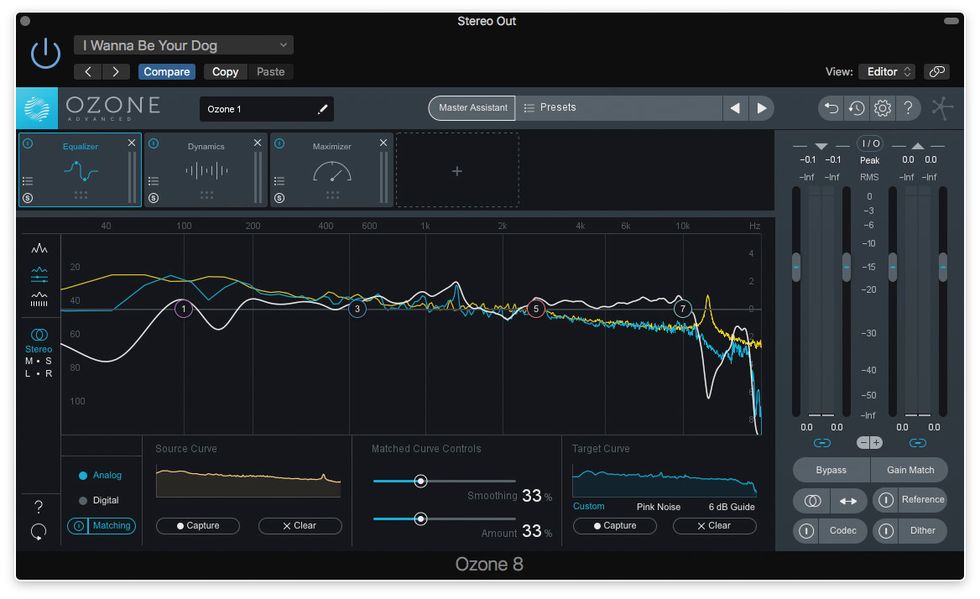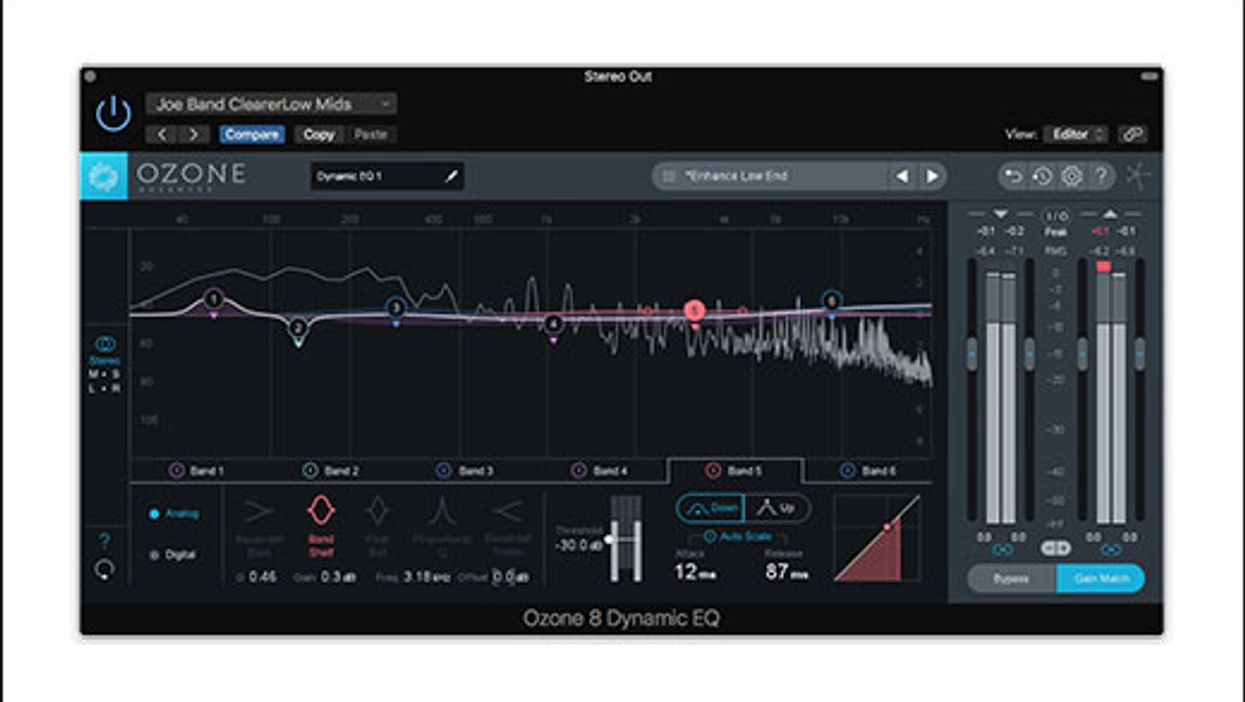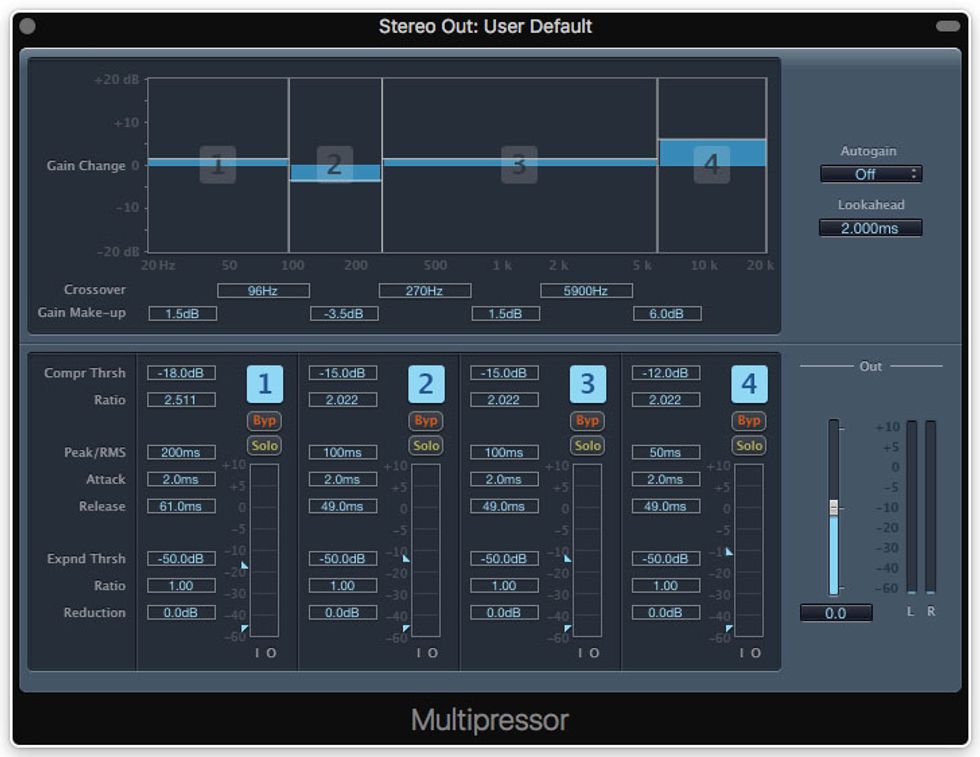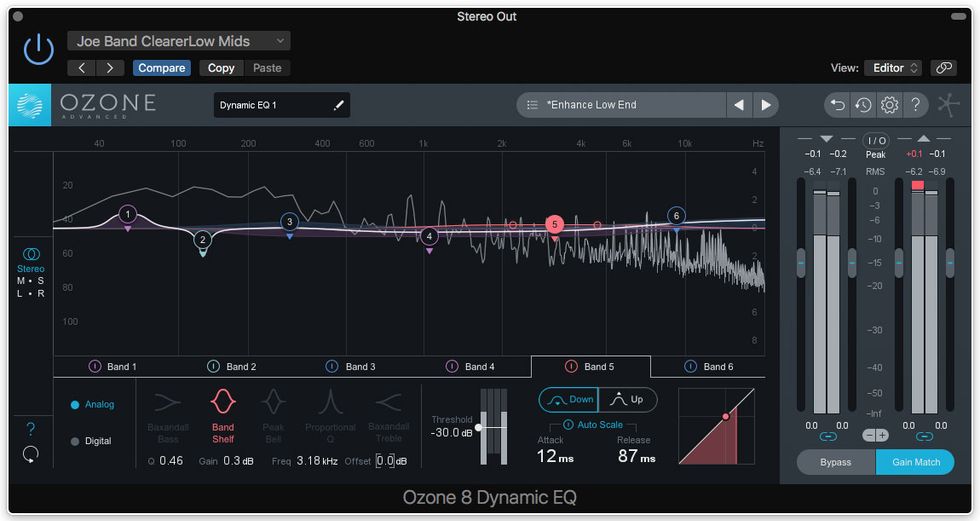This column continues the unlikely premise of last month's installment. We used the digital models from Universal Audio's Ox Amp Top Box to make audio comparisons between electric guitar recording techniques.
Yeah, it's weird using a digital box to illustrate analog techniques. But it's useful here because Ox's models are so realistic. The process also isolates the variable in question. You hear the same guitar, pickup, amp, amp settings, and recording path throughout.
Last time we looked at speaker size, single-speaker versus multi-speaker cabs, and microphone types and placement. Now let's explore options that arise when using multiple mics.
Variable 1: One mic vs. two. In Clip 1 you hear single-mic clips featuring virtual versions of three common electric guitar mics: a Shure SM57 dynamic, a Neumann U 67 condenser, and a Royer R-121 ribbon. (We discussed their characters last month.) Next come three possible pairings: 57 plus 67, 57 plus 121, and 67 plus 121. In the modeling, the virtual mics are positioned near each other and close to the speaker.
TASTING NOTES: A single mic has the pointiest, most direct sound. Adding a second mic introduces phase cancellations as the two mics “listen" from slightly different perspectives. This can add cool complexity and texture, though it often softens the impact.
Variable 2: Panned vs. non-panned mics. With two miked guitar tracks, you can choose how far apart to pan them, if at all. Clip 2 compares mono sounds (both mics at center) and the same mic combinations panned far left and right. You hear the 57 and 67 in mono and then in stereo, the 57 and 121 in mono and then stereo, and finally the 67 and 121 in mono and stereo.
TASTING NOTES: What's best: stereo or mono? Duh—it depends on the context! A mono sound often has the most impact, but a panned sound can add interest and depth. Panning can also maintain a prominent guitar sound while leaving the mix's center clear for vocals, bass, and kick drum—at least in a conventional mix.
Tip: When combining two mics, always try reversing the phase of one of the tracks within your DAW. One setting will probably sound much better than the other. Use that one.
Variable 3: Dry sound vs. room sound. Ambient room miking is one of the defining qualities of rock guitar. Somewhere in the vast catalog of Led Zeppelin outtakes there's a clip in which someone solos the two mics on Pagey's “Heartbreaker" amp. First you hear a dry, close-miked sound, then a boomy room sound, and finally the two mics together. Suddenly it sounds like Led Zeppelin—and countless other rock guitar recordings since that 1969 session.
But with today's tech you can get similar sounds with a single close mic and a good digital room reverb, as heard here. Clip 3 features the 67 plus 121 blend with no ambient room miking. Next is the room sound only, as it might be captured by a condenser mic positioned six feet or more from the amp. Finally, you hear the blend: first with just a bit of room, and then with more ambience.
TASTING NOTES: A close mic is in your face. A distant mic is out in space. At risk of oversimplifying, close miking alone often works for groove parts where the guitar shouldn't hog the limelight, while a roomier sound might be better if the guitar is front in center for big riffs or solos. Also, consider the quality of your tracking room. If you're working in a great studio, it can be a crime not to capture the ambient sound. If you're in a crappy-sounding bedroom, an ambient mic might not be worth your while. (But remember, an unusual ambience is sometimes cooler than a “good" one.)
Tip: When recording a band with the guitar amp isolated in another room, room sound can make the guitar sound more like part of the group. That could mean re-amping the guitar track in the room where you'd previously recorded the drums, or applying the same simulated ambience (in varying amounts) to all the tracks.
Variable 4: Stereo vs. mono room miking. With enough mics, you can choose whether the ambient room sound is captured in mono by a single microphone, or in stereo via two mono mics or a stereo mic. Two close mics and a stereo room sound means four tracks to blend and pan. Clip 4 showcases a few options. First you hear the ambient sound alone in mono, then in stereo. After that you hear mono close miking plus mono room sound, stereo close miking with mono room sound, and finally stereo plus stereo.
TASTING NOTES: This parameter can be pretty darn subtle. It might be meaningful on a solo guitar recording, but in a full-band mix you might not hear a difference. Our ears sometimes perceive stereo and panning in strange ways. If, say, the drums are panned dramatically in stereo, there's a good chance you'll think the mono ambience is stereo as well. For more drama, take a mono close-miked track and a mono room track and pan them wide. Yeah, that's “fake" stereo, but it can sound epic.


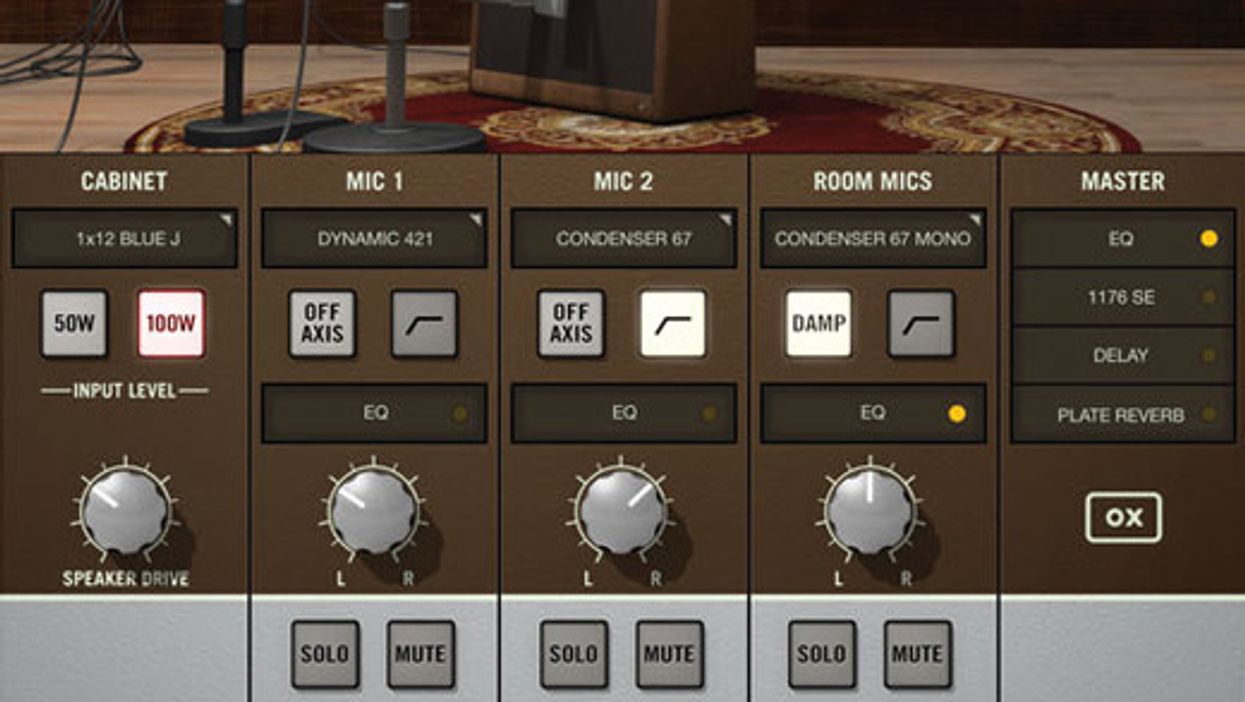





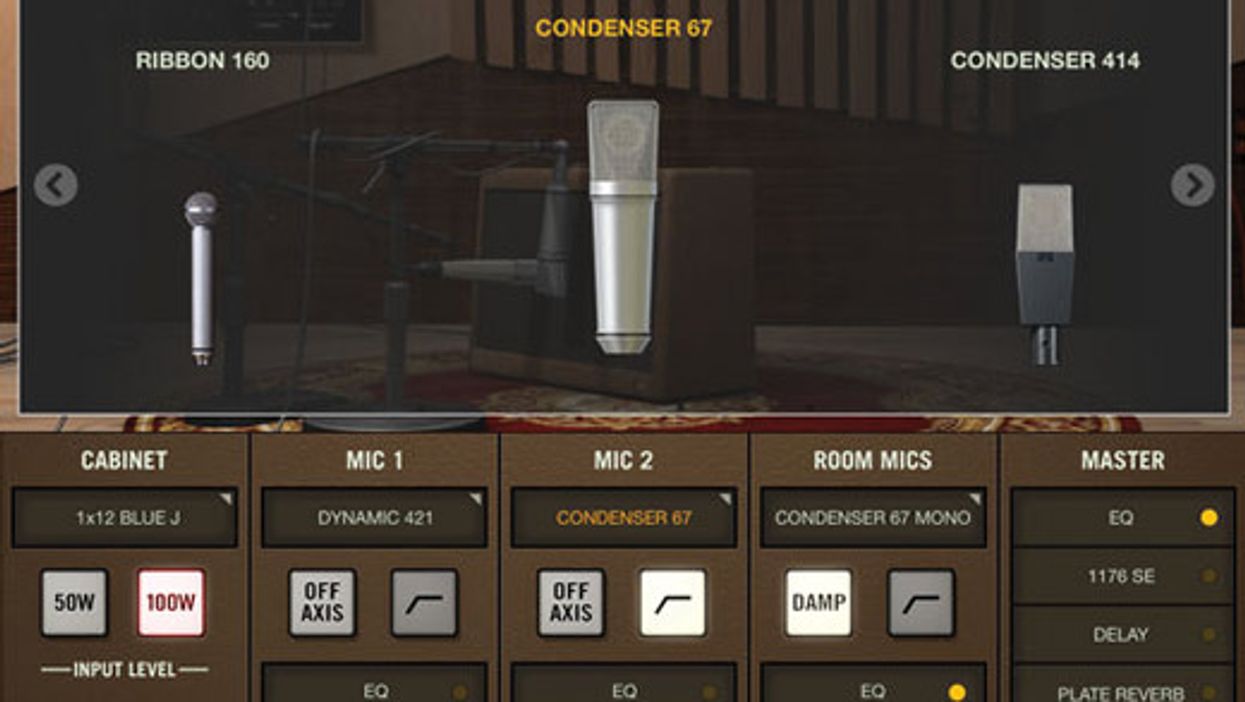



![Rig Rundown: Russian Circles’ Mike Sullivan [2025]](https://www.premierguitar.com/media-library/youtube.jpg?id=62303631&width=1245&height=700&quality=70&coordinates=0%2C0%2C0%2C0)


